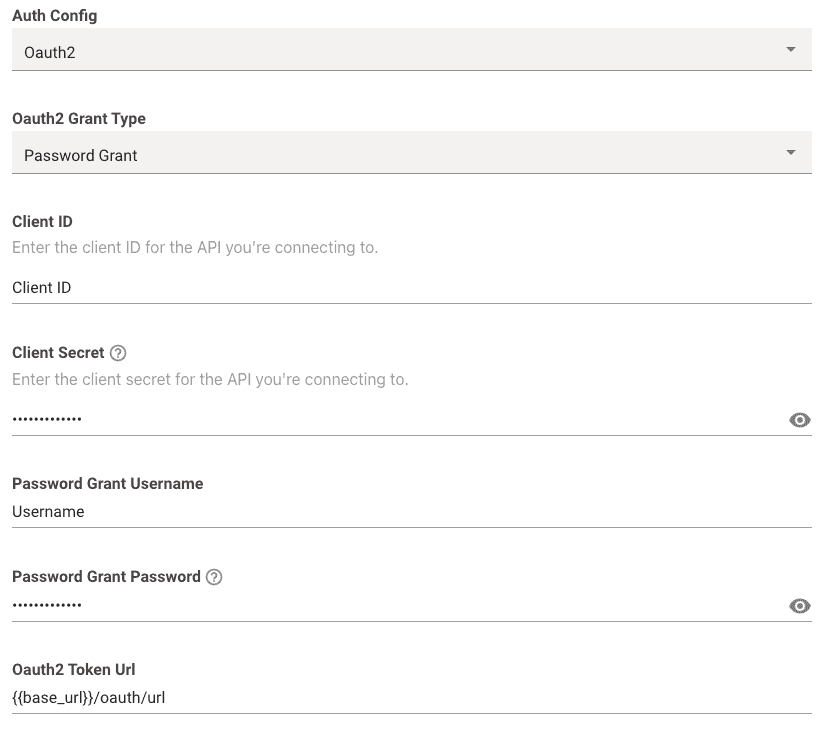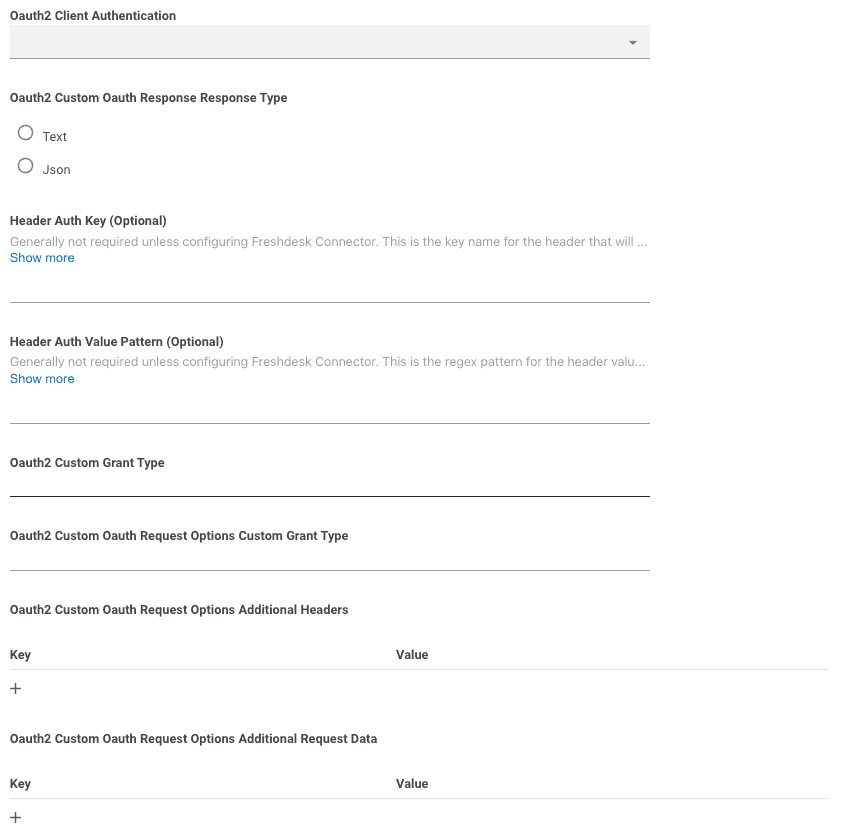OAuth 2.0 - Password Credentials
OAuth 2.0 Password Credentials is an authentication method that allows a user to exchange their username and password for an Access Token.
- This Access Token can be used in subsequent requests to authenticate API calls, typically as a Bearer Token.
When the Access Token expires, the user's credentials can be used to obtain a new one from the authorization server. - To set this up, choose
Oauth2from the Auth Config dropdown list.
Required Info for the connector.

-
Oauth 2 Grant Type: This should be set toPassword Grant -
Client ID: This is where you input your actual Client ID value itself. -
Client Secret: This is where you input your actual Client Secret value itself. -
Password Grant Username: This is where you input your actual Username value itself. -
Password Grant Password: This is where you input your actual Password value itself. -
Oauth2 Token Url: This is where you input the full token URL.
Now we move on to adding the additional info in the connector.

Oauth2 Client Authentication: This can be left blank.
Moveworks will try making the request with both Basic Auth and Request Body Auth by default.Header Auth Key,Header Auth Value Pattern,Oauth2 Custom Grant Type,Oauth2 Custom Oauth Request Options Custom Grant Typeshould all be left blank.- If needed, you can leverage
Oauth2 Custom Oauth Request Options Additional Headersto send additional Headers needed for the request.- This is what your headers will look like:
If you want to add any additional headers they'll get added to the headers:Client-Id: XXX Client-Secret: YYY Username: AAA Password: BBBClient-Id: XXX Client-Secret: YYY Username: AAA Password: BBB Customer-Header: Custom-Value - If needed, you can leverage
Oauth2 Custom Oauth Request Options Additional Request Datato send additional body data needed for the request.- data is sent in x-www-form-urlencoded format in the body like so:
curl --location 'URL' \ --header 'Content-Type: application/x-www-form-urlencoded' \ --data-urlencode 'client_id=abcd-1234' \ --data-urlencode 'client_secret=secret123456' \ --data-urlencode 'Custom-body=abcde12345' \
Updated about 1 month ago